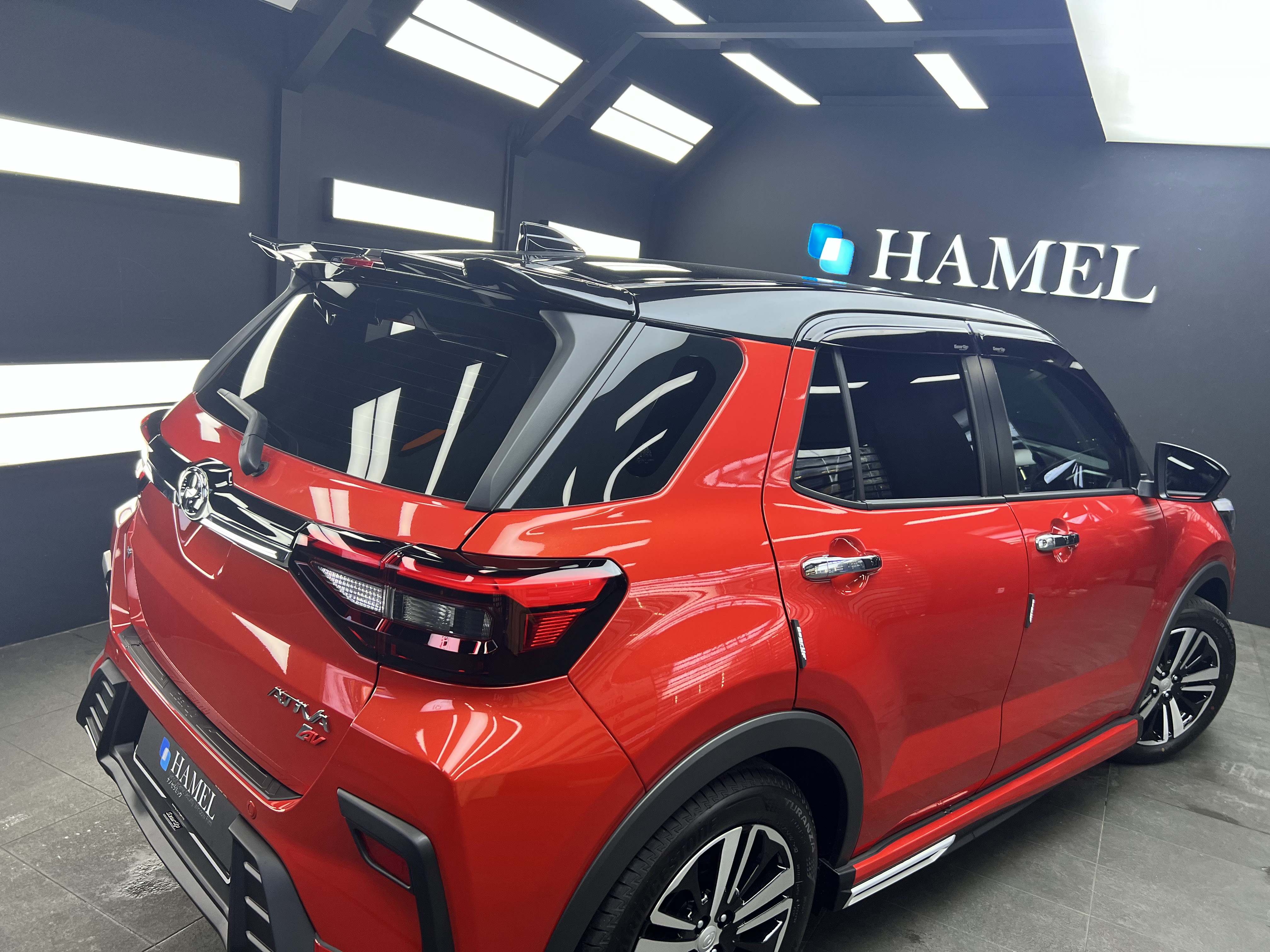Search Blog
Hit enter to search or ESC to close
Trending Now
AirAsia wins Platinum in travel category at Putra Brands Awards
- Get link
- X
- Other Apps
Touch ‘n Go Wins Super Aspiring Brand Award in the Lifestyle Category at the Shopee Super Awards 2023
- Get link
- X
- Other Apps
Home
Education
Lifestyle
Samsung
Solve For Tomorrow
Innovating for the Future – How Solve For Tomorrow 2021 Winners from Around Southeast Asia & Oceania Are Building a Better World
Home
Education
Lifestyle
Samsung
Solve For Tomorrow
Innovating for the Future – How Solve For Tomorrow 2021 Winners from Around Southeast Asia & Oceania Are Building a Better World
Brandon Chua
- Get link
- X
- Other Apps
Reading Time
As the saying goes, “The youth of today are the leaders tomorrow”.
Harnessing this belief, Samsung is committed to empowering future generations to achieve their full potential and pioneer positive change.
Solve For Tomorrow is a global program created to provide unique learning opportunities for students to use their knowledge in Science, Technology, Engineering, and Math (STEM) to build meaningful solutions to tackle societal problems. Through this annual competition, students also gain invaluable skills in teamwork, collaboration, critical thinking, and creativity, preparing them for the future workforce.
In Southeast Asia and Oceania, over 6,500 entries were received for Solve for Tomorrow 2021 programs that ran across Australia, Malaysia, New Zealand, Singapore, and Vietnam. Over the past year, the overall program has reached more than 80,000 individuals, spreading the culture of innovation and creativity among schools and communities throughout the region.
We spotlight the young winners from across the region, and the outstanding innovations they have created to drive real, positive impact.
Australia
For the 2021 edition of Solve for Tomorrow in Australia, students were encouraged to create fun TikTok videos that presented social issues of personal relevance while highlighting STEM-based solutions.
 |
| (L-R): Meg Phillips; James Wooden and Casey Tumbers of Intervergent; The MedMakers |
Tasmania-based Meg Phillips emerged as the overall winner, driven by her passion for animal conservation. Tapping on her experience at an engineering internship, she created an RFID-based system to warn animals of approaching cars. Known as the ‘Roadkill Reducer’, an alarm is sounded whenever animals are near roadsides or when a car is nearby. Her innovative solution utilises existing RFID technology and requires minimal infrastructure, making it a practical system with the potential to reduce both wildlife casualties and keep drivers safe.
Malaysia
Malaysia’s Solve For Tomorrow competition in 2021 focused on the themes of ‘Environmental Sustainability’ and ‘Access to Education’. Student participants also attended a Design Thinking workshop, co-organized with Universiti Malaya’s STEM Centre, to develop creativity, empathy, ideation, and problem-solving skills.
 |
| Team “TAZ” comprised of Tan Zhang Li, Adam Sim Kah Lock and Zachary Sim Kah Yao |
Winning Team “TAZ” developed an app that connects Malaysian students around the country with study buddies of similar interests, to teach each other subjects through games and equip them with time management tips. The team of three students: Tan Zhang Li, Adam Sim, and Zachary Sim from St. Francis Institution, Malacca, also developed the app to help more students nationwide gain affordable access to a wider range of learning materials. A summary of the finale and inventions from the winners and runners-up can be viewed below:
New Zealand
2021 marked the first time Solve for Tomorrow was held in New Zealand. The theme of ‘Arts’ was included as a key judging criterion for the competition. Two co-winners were crowned in the inaugural competition, successfully applying Science, Technology, English, Arts, or Math (STEAM) skills to solve their chosen challenges.
Drew Kenny, a twelve-year-old Year 7 student from Tauranga Intermediate School, created a “Parkinson’s Belt” to provide people suffering from Parkinsons’ disease with quick access to medication, water, and their support alarm. With a clear focus on patient-centred design, Drew incorporated feedback from Parkinson’s patients to help make key decisions – like utilising comfortable neoprene material for the belt and designing the ideal positioning of various belt features for maximum convenience. Watch her entry below:
Fifteen-year-old Harrison Maxwell, a Year 10 Rangitoto College student, leveraged the potential of unused roadside grass (also known as berms) with his “Beautify the Berms” project. He proposed planting beautiful fauna in berms to help strengthen ecosystems for local wildlife such as pollinators, while uniting communities in a combined effort to minimise long-term maintenance costs. Harrison further proposed several low-maintenance, hardy flower species that enabled berms to remain beautiful ecosystems all year round. View his entry below:
Singapore
Singapore’s fifth instalment of Solve For Tomorrow challenged post-secondary and university students to address key issues under the themes of ‘Environmental Sustainability’, ‘Digital Inclusion for Seniors’, ‘Health & Wellness’, and ‘Preparing for the Future of Work’.
 |
| (L-R) Mohammed Khambhati, Ti Kyi Kyaw, Keeret Singh, and Toh Siew Hean of Team MNKS X CO2; Yuan Hai Shu and Alyssa Cheok of Team Adustio |
Team MNKS x CO2, the winner of the post-secondary category, comprised of Mohammed Khambhati, Ti Kyi Kyaw, Keeret Singh, and Toh Siew Hean from Singapore Polytechnic. To address climate change, they conceptualized a biofilter for vehicles with a biofilm made of genetically modified E. coli bacteria that converts environmentally harmful carbon dioxide emissions into oxygen.
Representing the University Category, Team Adustio developed a two-part, sustainable solar energy system. Members Alyssa Cheok and Yuan Hai Shuai first designed an organic solar battery made from biodegradable seaweed carrageenan, with properties that maximize battery efficiency while reducing toxic waste. This organic battery was then paired with sensors and a mobile app, which would automatically tilt solar panels in response to the sun’s changing position throughout the day to better harness solar energy.
Vietnam
In Vietnam, the Eco Warriors team from Hanoi won the High School Category with their specially designed mask-recycling machine to mitigate waste created from the widespread use of plastic masks during the pandemic. By melting and remoulding the plastic, the team demonstrated that a plastic pot could be created from recycling 10 masks in just one and a half minutes. The team also showcased their prototype at various high schools to spread their passion for the real-world application of STEM skills.
 |
| (L-R) The Eco Warriors, Team Robo Kat |
Meanwhile, Team Robo Kat from Dong Thap province won the Secondary School Category with a wall climbing robot car that applied a no-contact-force method to conduct remote inspections of drainage pipes. The wall climbing robot was built to perform dangerous tasks on behalf of humans, such as cleaning, sweeping, measuring and inspecting structures. The diversity of innovations from Solve for Tomorrow’s 2021 winners continues to inspire and cultivate student changemakers around the world.
You May Also Like
Affordable, Simple, and Accessible: DearTime Launches as Malaysia’s First Life Insurer in the BNM Sandbox
- Get link
- X
- Other Apps
LG’S New 32HR734S 4K Surgical Monitor with Mini LED Technology Delivers Outstanding Image Quality
- Get link
- X
- Other Apps










